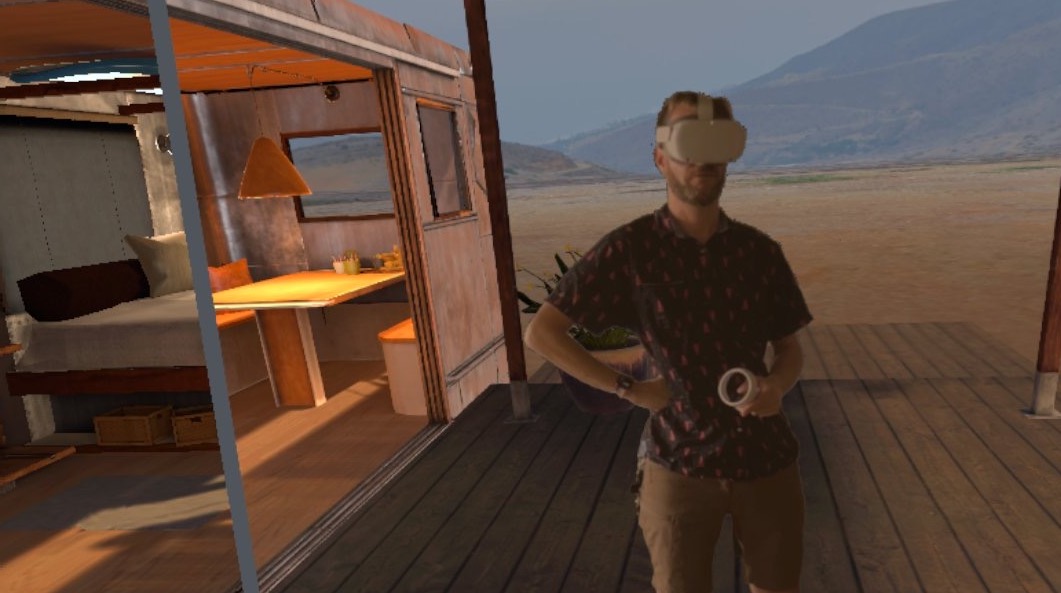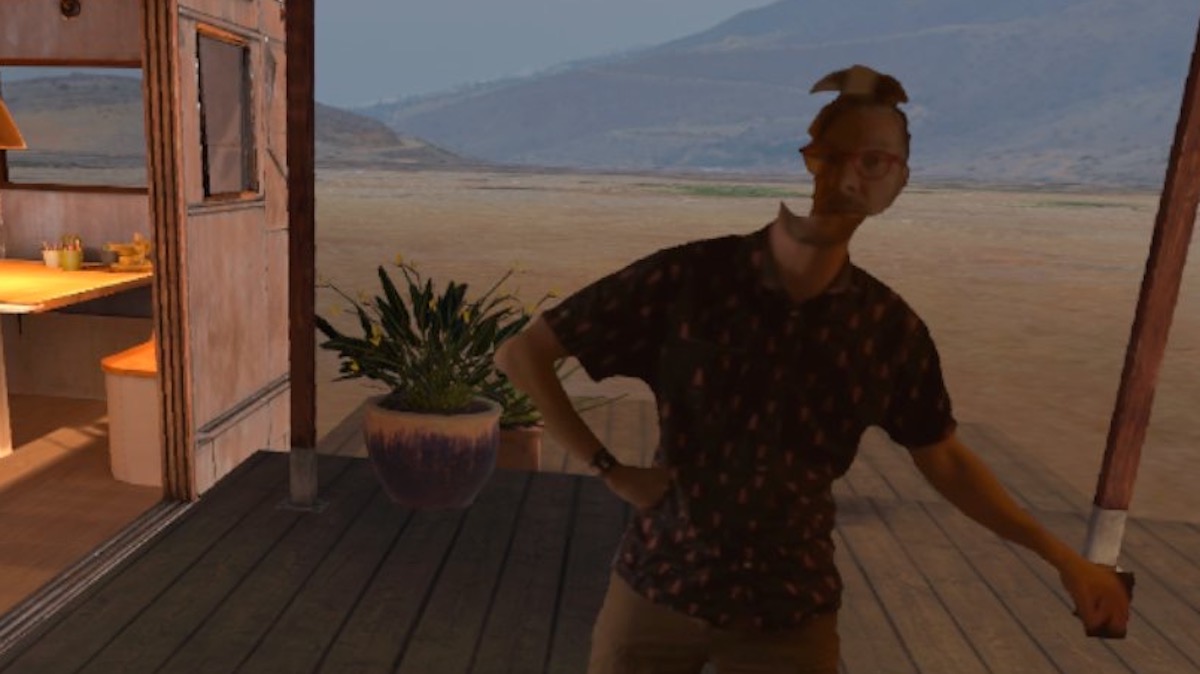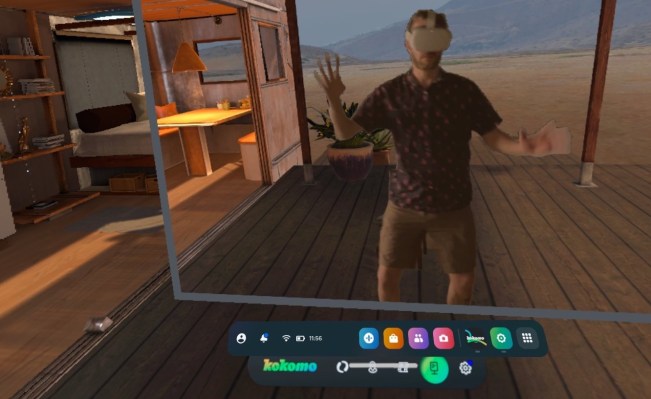When you think Canon, you might think cameras, scanners, printers and such. At CES this year, the company did a stride toward the softer side of tech, taking a broader view of what imaging means. Today, the VR calling software the company showed off back in January is available to you — if you have a VR headset such as the popular Oculu… I mean Meta Quest 2.
In a limited preview earlier this month, I was able to try out Canon’s new VR calling software platform, which involves a phone and a VR headset. Overall and in theory, the system is super-well-thought-out: You scan your face using an app on your phone, which builds a model so the app can replace the part of your face that’s covered up by your VR mask. It also asks you how tall you are, so it can scale your picture proportionally to the person you are talking to — a nice touch; as a tall person, it often feels unheimlich to be face-to-face with people when I’m in VR.

I knew we would do the demo in a desert setting so I wore a Hawaiian shirt and shorts. Nope, there’s no way of looking cool in VR — and the removing-the-mask-from-my-face feature worked about 20% of the time. Image Credits: Screenshot of the Kokomo / Canon app in VR
Once you’ve gone through the setup process, you place your phone at waist height and take a few steps away, don a VR mask and dive into a conversation. The phone uses its front-facing camera to capture a live picture of you, while the VR headset shows your fellow caller. If everything goes to plan, it’s telepresence at its finest, without the vast expenditure of typical telepresence systems.
That’s the theory — and what Canon is working toward with its platform. I’m loving the vision, but the reality of the current system isn’t quite there yet.
In practice, things are not quite smooth. In my test call with the Kokomo team, I’m rather generous if I say I saw the other person in the call refresh at about three to four frames per second. That’s not enough to make the call feel smooth, and it rather got in the way of feeling the presence of the, er, telepresence. The avatar I was speaking to was also two-dimensional, which is something we haven’t seen in VR for a while — in effect, it feels like the person on the other side of the call is an animated cardboard cutout. That, combined with the low frame rate and the haphazardness of the VR mask removal (it appeared and disappeared at regular intervals), did everything it could to ruin the immersion.

I can only assume that over time the VR mask removal tech will be less Picasso-esque. Image Credits: Screenshot of the Kokomo / Canon app in VR
The biggest praise I can heap on Kokomo is that despite being early in its technical journey — and despite the litany of bugs and early-software gremlins — I think it shows tremendous promise. For now, the team tells TechCrunch it won’t be charging for the service; it wants to learn and get feedback from early users to help direct product development.
It’s hard to predict what happens next for the product; VR adoption is growing, and telepresence is a compelling use case for spending some time with your friends in VR. Right now, the tech is good enough to enable you to dream of the future that’s yet to come, but is not quite to the level that it makes sense. All of these things could change, and the most interesting takeaway from this product, I believe, is Canon’s dedication to bringing Kokomo to market and putting it in front of customers. It’s definitely one to keep an eye on — and, if you have the required hardware, worth trying out with a friend.
